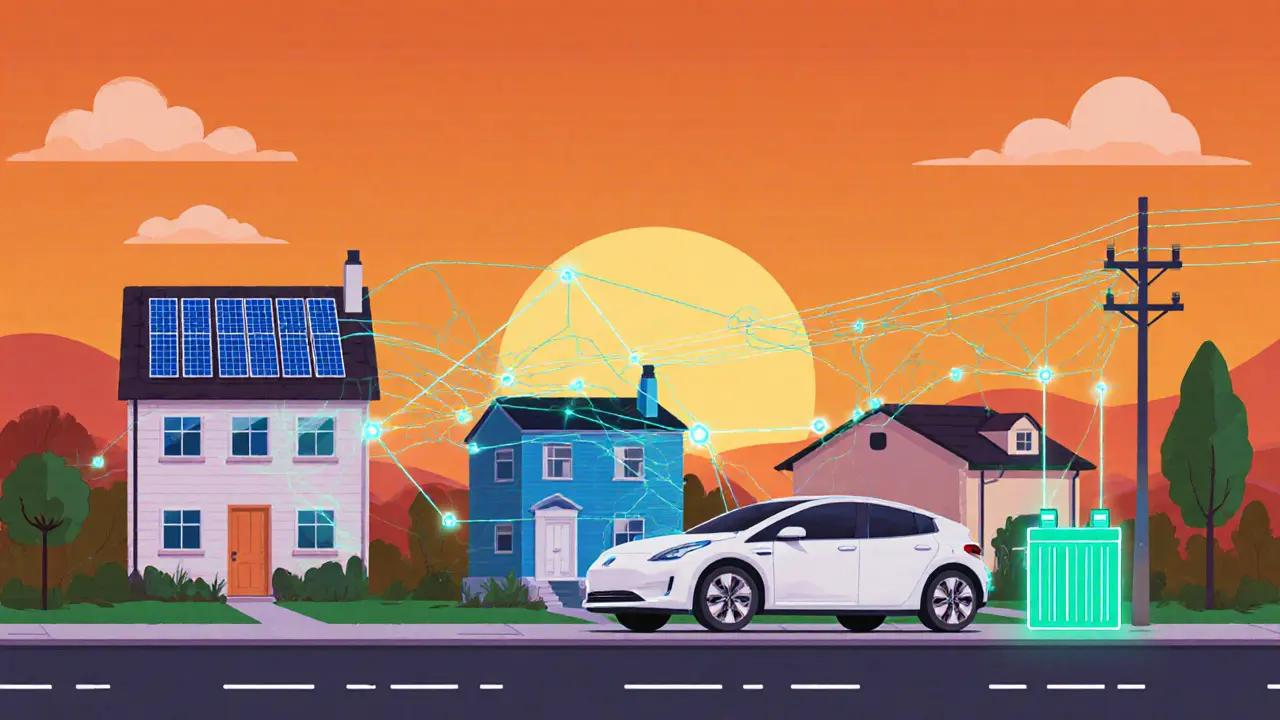Smart Grid and Blockchain: How Crypto Is Changing Energy Networks
When you think of a smart grid, a modern electricity network that uses digital technology to monitor and manage power flow in real time. Also known as an intelligent grid, it’s not just about smarter meters—it’s about letting people trade energy like crypto. Imagine your solar panels sending excess power directly to your neighbor, and getting paid in tokens instead of a utility bill. That’s not science fiction. It’s already happening in test zones across Europe, Asia, and the U.S., powered by blockchain.
The blockchain, a distributed digital ledger that records transactions securely and transparently without a central authority. Also known as distributed ledger technology, it’s the engine behind this shift. Just like how Bitcoin lets you send money peer-to-peer, blockchain lets households send electricity peer-to-peer. Projects like Power Ledger and LO3 Energy use smart contracts to auto-execute energy trades when certain conditions are met—like when your neighbor’s battery is full and your panels are producing extra. No middleman. No delays. No hidden fees.
This isn’t just about saving money. It’s about resilience. When storms knock out centralized power plants, decentralized smart grids keep neighborhoods running. Communities with solar + blockchain systems stayed online during blackouts in Texas and Puerto Rico. And it’s not just for the rich. In places like Thailand and Pakistan, where traditional utilities are unreliable or overpriced, people are using crypto-enabled microgrids to power homes, clinics, and small businesses. The smart contract, a self-executing code that runs automatically when conditions are met, often used in energy trading and automated billing. is what makes this possible—no lawyer, no bank, just code.
What you’ll find in the posts below isn’t hype. It’s real stories from the front lines: how crypto exchanges are being used to fund local energy projects, why some blockchain-based power platforms failed (and what went wrong), and how people are bypassing broken utility systems with simple apps and tokens. You’ll see how privacy-focused blockchains like Secret Network are helping users anonymize their energy usage data, and how staking tokens can earn you discounts on your next power bill. This isn’t about trading Bitcoin—it’s about trading power, and the people who are doing it are changing how the world gets electricity.
Smart Grid Management with Blockchain: How Decentralized Ledgers Are Changing Energy Distribution
Blockchain is transforming smart grid management by enabling secure peer-to-peer energy trading, eliminating double-counting of renewable credits, and improving transparency. Learn how it works, where it shines, and why it won't replace your utility.
Details +